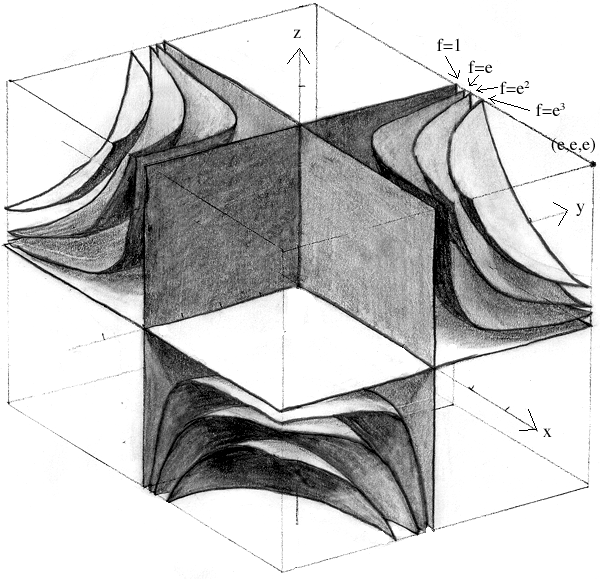
It is, of course, impossible to fully render four dimensional functions in this three dimensional world. However, we can get some sort of visual feel for a 4D function by graphing some of its level sets. Just as level sets of a 3D graph allow us to see how the 3D graph would be sliced by a plane moving along one of the three perpendicular axes, level sets of a 4D graph allow us to see how the 4D graph would be "sliced" by a three-space moving along a fourth perpendicular axis. So, comma, level sets of a 3D graph are 2D, and level sets of a 4D graph are 3D.
In order to visually make sense of level sets, we usually try to draw them all together on one graph. With 2D level sets, this can get complicated enough; combining 3D level sets in one 3D graph can be extremely confusing. Help follows, using the example f(x,y,z)=e(xyz):
Step 1. Draw three or four significant level sets on separate graphs. For this example, we'll choose the level sets f(x,yz)=1,e,e2 and e3. Sketching is fine here, but make sure that all of the graphs are the same size and scale, otherwise combining them can get very tricky.
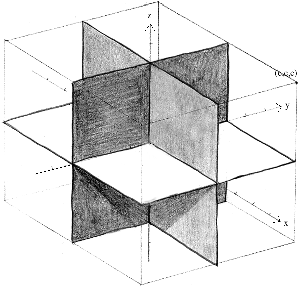 The level set f(x,y,z)=1
The level set f(x,y,z)=1
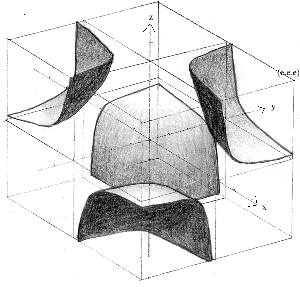 The level set f(x,y,z)=e
The level set f(x,y,z)=e
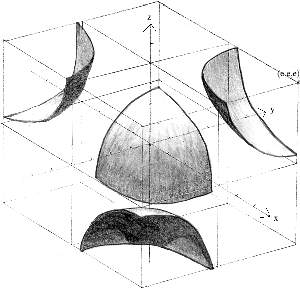 The level set f(x,y,z)=e2
The level set f(x,y,z)=e2
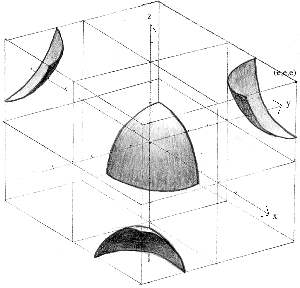 The level set f(x,y,z)=e3
The level set f(x,y,z)=e3
1. Draw in all of the contours on the three sides of the fence closest to the viewer. In this case, the contours will lie on the planes x=1, y=-1, and z=1. These contours will clearly always be visible in the combination graph, since they are on the outside of the fence facing the viewer.
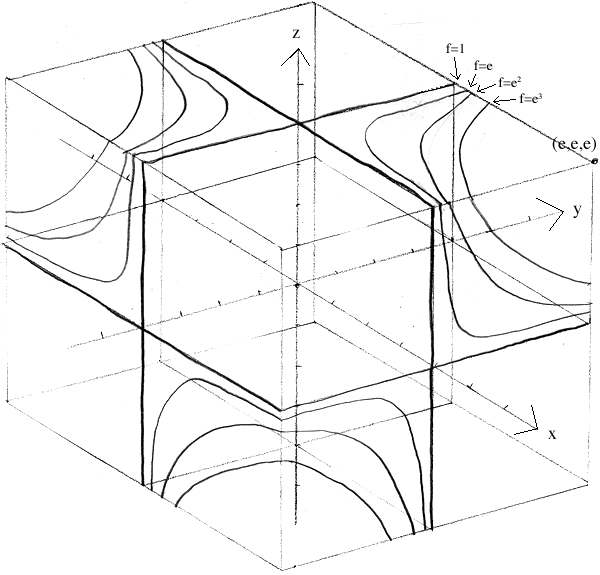
2. Think about which level sets will remain at least partially unblocked by the other level sets superimposed in the combination graph. Starting with the outer level sets, fill in all the contour lines that will be visible to the viewer.
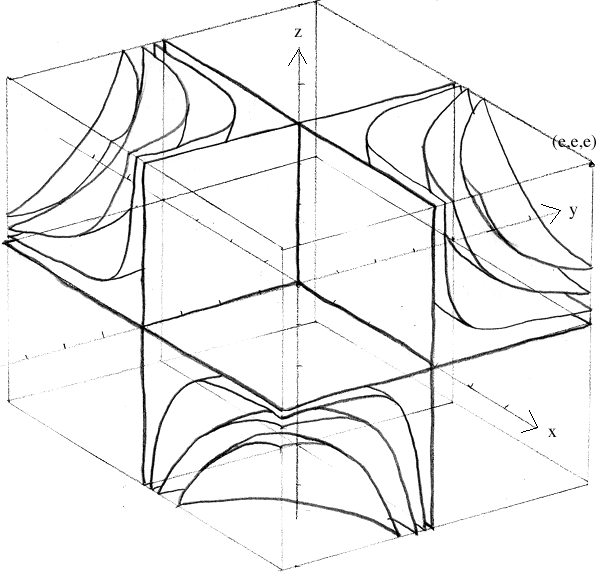
3. Shade each surface just as you did in each level set sketch.
4. Refer to the 4D-shading tutorial for instructions on how to add in the shadows that upper surfaces cast on to lower surfaces. Alternatively, try using a different color for each level set. Colored pencils are probably the best tools for this as you can shade smoothly with them.
